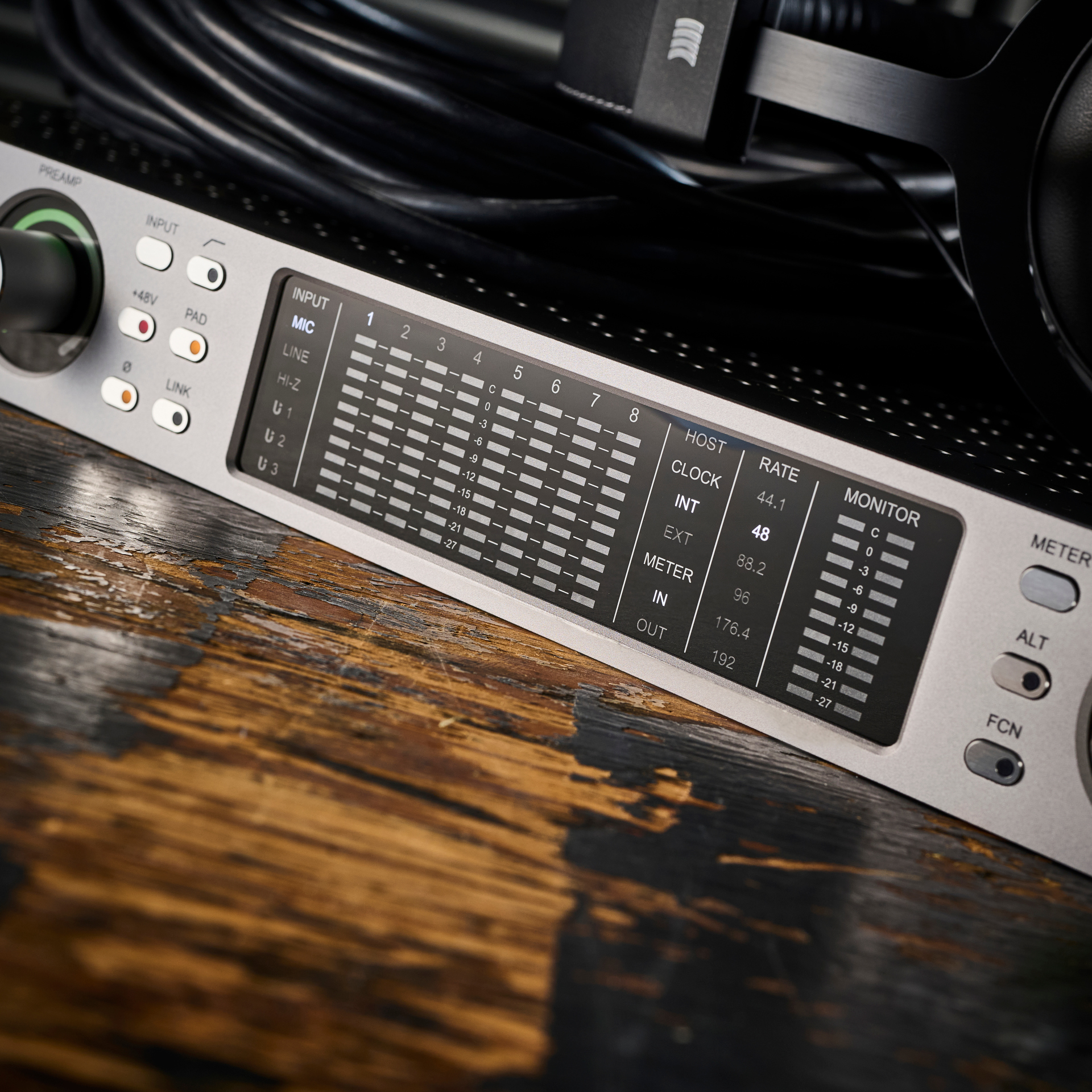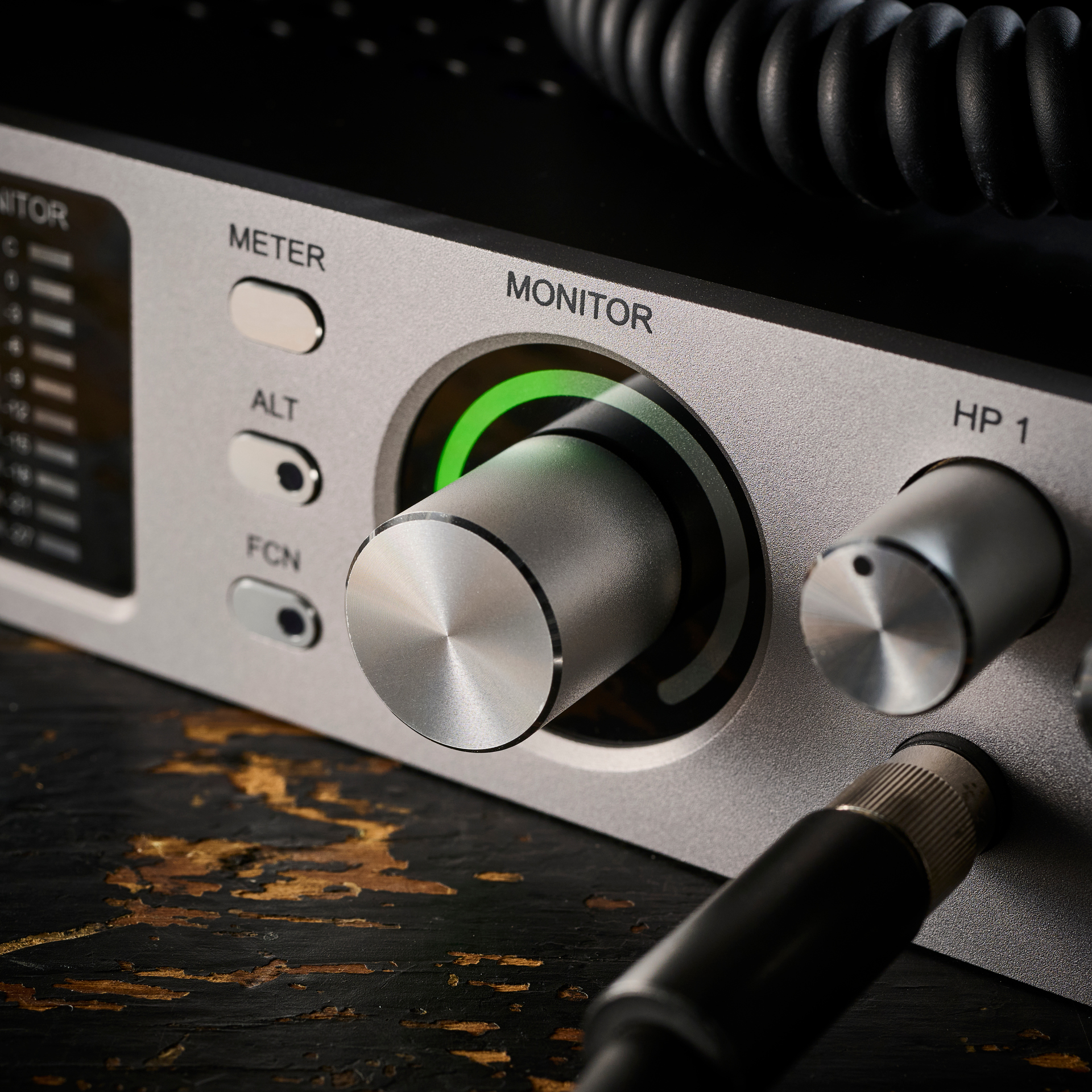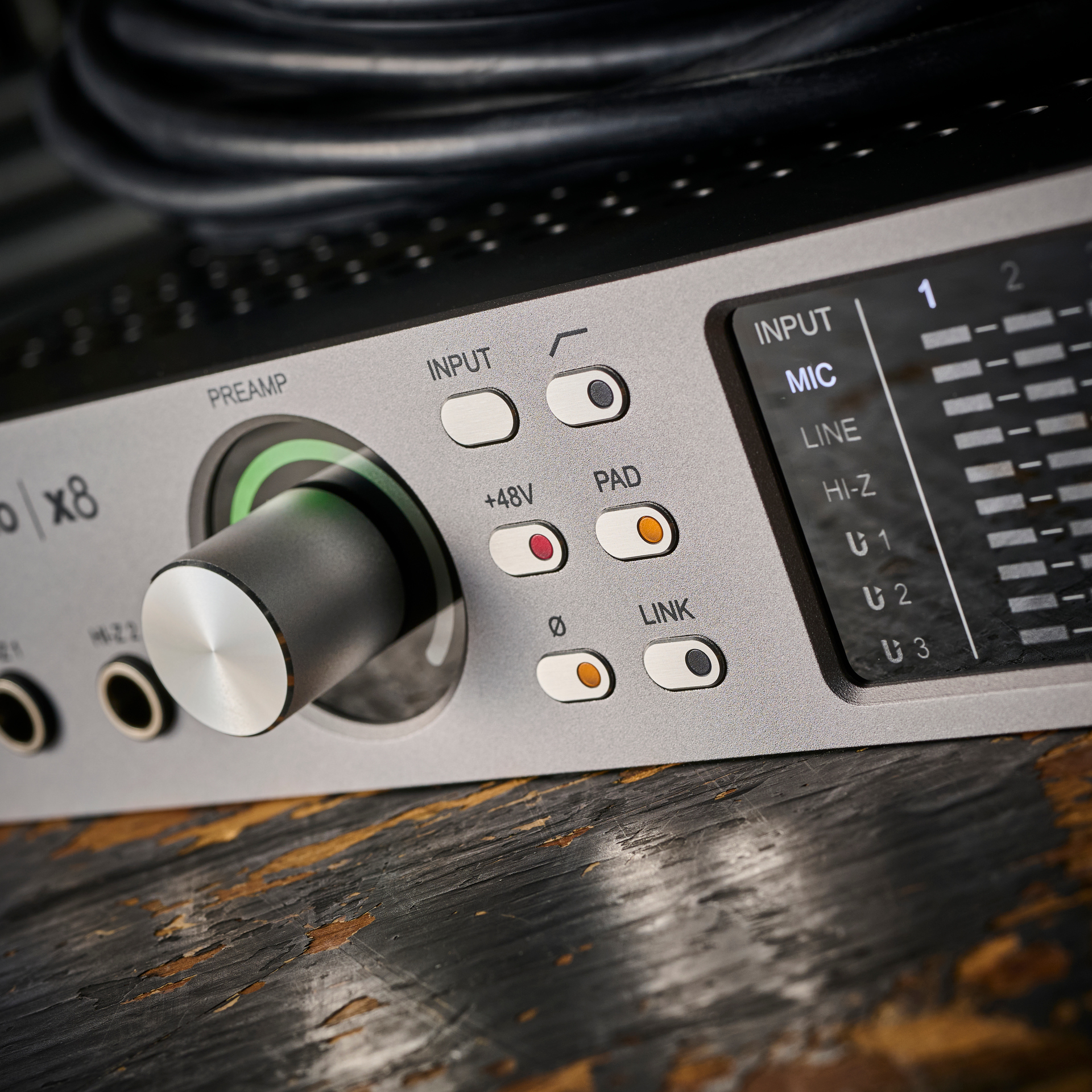MusicRadar Verdict
The Apollo x8 Gen 2 is slicker than ever and although some of the improvements are quite nuanced, the incoming Sonarworks SoundID integration and monitoring extras will no doubt be suitably welcomed by the unit’s target audience.
Pros
- +
Visually updated unit with improved conversion for monitors and headphones
- +
New integrated Sonarworks SoundID monitoring correction
- +
Bass management integrated into monitor control panel
Cons
- -
Expensive
MusicRadar's got your back
Universal Audio Apollo x8 Gen 2 review: What is it?
Universal Audio’s Apollo interfaces have proved to be massively successful, and it’s not hard to see why. They offer a market-leading combination of audio interfacing, onboard DSP for UAD plugins (VST, AU and AAX), and DSP-supported Unison preamps. When you factor in UAD’s over 200 plugin library, and the broad choice of interfaces, it’s hard to think of another manufacturer that offers this range of options, or combination of features.
The whole range has now received a refresh and up for review we have the Apollo x8 Gen 2. This sits towards the upper end of the range and is a traditional 1U rack mount unit, offering 18-in / 24-out at up to 24-bit / 192kHz resolution, and HEXA core (6-chip) DSP.
On the input side, you get 8 analogue ins and 4 of these are mic inputs with independent XLR connectors. The first 2 mic inputs also have front-mounted Hi-Z instrument jacks. On the output side, you get stereo monitor outputs, 8 further analogue outs and a pair of front-mounted headphone outputs. ADAT and S/PDIF digital connections complete the I/O.
For both monitor and headphone outputs, the Apollo x8 Gen 2 includes improved D/A conversion with increased dynamic range (DNR) and lower distortion (THD). In our opinion, both sound excellent. The unit uses Thunderbolt 3, but is also Thunderbolt 4 compatible and for Mac users backwards compatibility with TB2 and TB1 using the Apple converter cable.
Two Thunderbolt 3 ports allow for chaining of additional Apollo devices (4 total) and UAD DSP units. On the plugin side Apollo x8 Gen 2 is available in the Essentials+ and Studio+ versions, offering a selection of over 20 and over 50 DSP plugins respectively.

Universal Audio Apollo x8 Gen 2 review: Performance
Apollo rack mount interfaces are extremely well made, and the weighty full-depth form factor is a bit of a rarity these days. The x8 Gen 2 moves away from the black finish of its predecessor, with a new thick metal face plate and slicker push button encoder knobs and soft buttons, and this offers a more modern look. Meanwhile, sticking with the existing panel layout keeps things familiar. As before the front panel offers direct control of input settings, monitoring levels and metering, and this is mirrored in the UAD Console desktop software. Here you can also access input and Unison plugins, monitoring plugins and cue mixes, amongst other interface settings and options.
Despite the familiarity, the Gen 2 release brings with it some significant extras. First up, auto gain. For Apollo x8 Gen 2, this is accessed via UAD Console, and not via the interface as we have seen from some manufacturers. That said, the implementation is more nuanced, with adjustable target and threshold levels, signal monitoring duration, and multiple preamp selection.
Want all the hottest music and gear news, reviews, deals, features and more, direct to your inbox? Sign up here.

Bass management is an important aspect of multichannel monitoring and is now integrated into the UAD Console for both Gen 2 and Gen 1 Apollo X users. The bass management section of the Monitor Controller window allows for a separate LFE source or for a sub-split from a regular stereo output (Satellite Crossover). In both cases, you have a choice of LPF settings and thankfully these are to hand and not buried in the Settings page. Coupled with the Speaker Utilities tab, which includes speaker trims, muting and solo of individual speaker feeds, it’s all incredibly easy to use and suits both stereo and multichannel applications.
Finally, Apollo X Gen 1 and Gen 2 users now have integrated monitor and headphone room calibration courtesy of Sonarworks, and for Apollo x8 Gen 2 units upwards you can load up to 3 different profiles simultaneously (1 monitor and 2 headphone). This requires you to purchase the Apollo Monitor Correction add-on ($79) and also to have the Sonarworks SoundID Reference system.
Nevertheless, once you have this in place, SoundID Reference links with Console, so your SoundID settings (loaded profile, target and dry/wet blend) are applied to your Apollo and visible in the dedicated Monitor Controller panels. It’s planned for release in November, but we’ve tried it already and have to say it works well and is excellently integrated.

Universal Audio Apollo x8 Gen 2 review: Final verdict
The Apollo x8 interface already ticks a lot of boxes, and the Apollo x8 Gen 2 builds on this. The familiarity will be welcomed by many existing users looking to upgrade, as will the improved monitoring sonics. Meanwhile, the Sonarworks integration coupled with other UAD Console improvements bring some welcome new functionality. All round this is a very solid upgrade.
The Apollo x8 Gen 2 is slicker than ever and although some of the improvements are quite nuanced, the incoming Sonarworks SoundID integration and monitoring extras will no doubt be suitably welcomed by the unit’s target audience.
Universal Audio Apollo x8 Gen 2 review: Specs
- I/O: 18-in, 24-out at 24-bit up to 192kHz
- DSP: HEXA Core 6-chip
- Mic Inputs: 4 Unison with integrated DSP emulation
- Analogue Outputs: stereo monitor, 8 line, 2 stereo headphone
- Digital: S/PDIF, ADAT S-MUX 8 I/O up to 96kHz, 4 I/O up to 192kHz
- Mic input: DNR 123dB(A), THD -114dB (0.00020%)
- Monitor output: DNR 130 dB(A), THD -127dB (0.00005%)
- Headphone output: DNR 126 dB(A), THD -117dB (0.00014%)
- Software features: DSP UAD plugins, minimal latency monitoring, bass management, preamp auto gain
- Size: 483(w) x 44.5(h) x 346(d) mm
- Contact: Universal Audio
Jon is a London based platinum award winning mixer, producer, composer and club remixer with a diverse CV that spans dance, pop, rock and music for media. He’s also a long term contributor to MusicRadar's music technology tutorials and reviews. Whether working alone or collaborating he usually handles final mixdowns, so you’ll also find MusicRadar peppered with his handy mixing tips.

